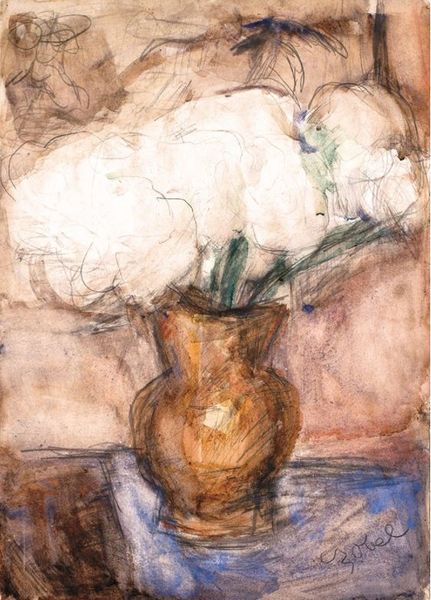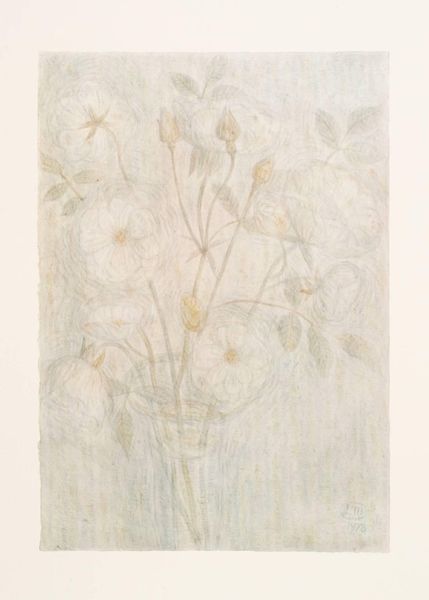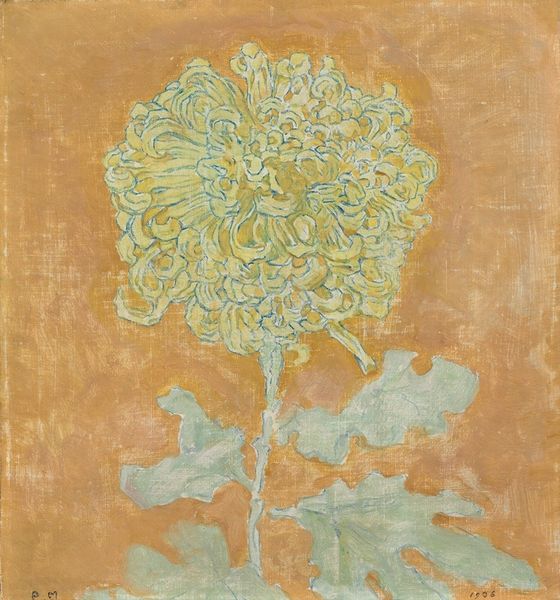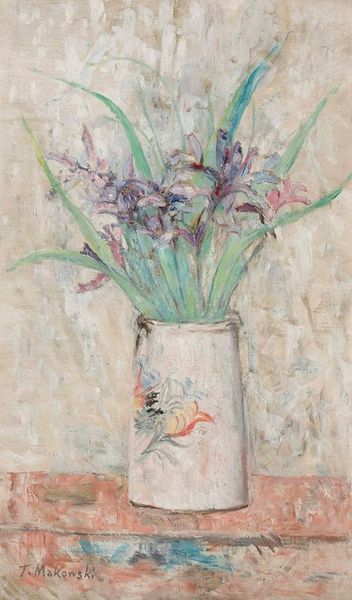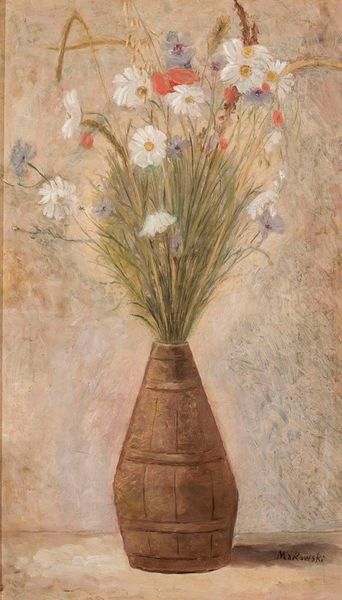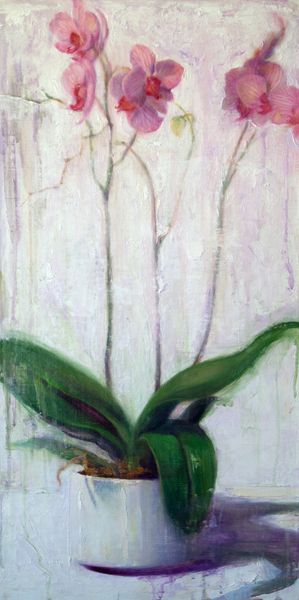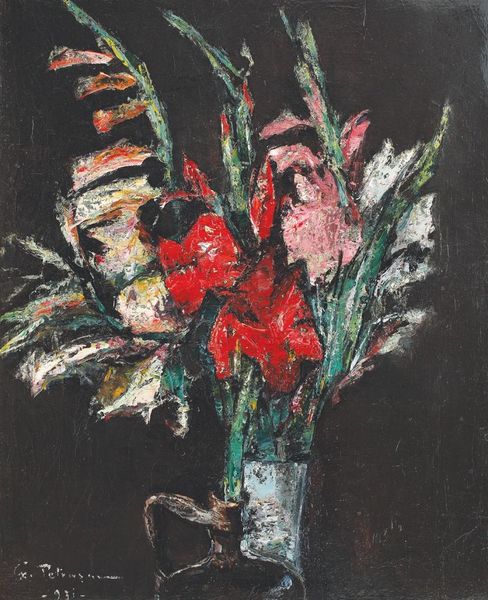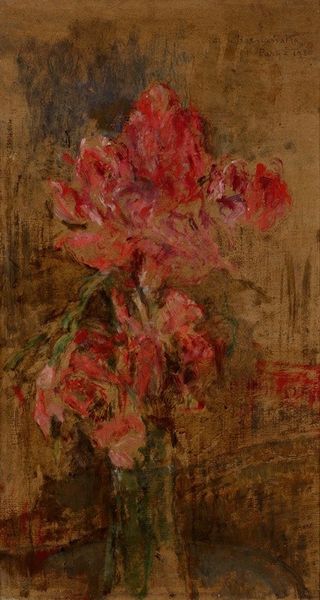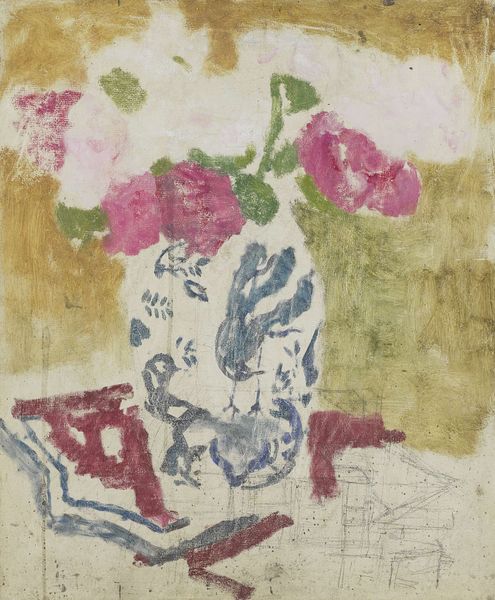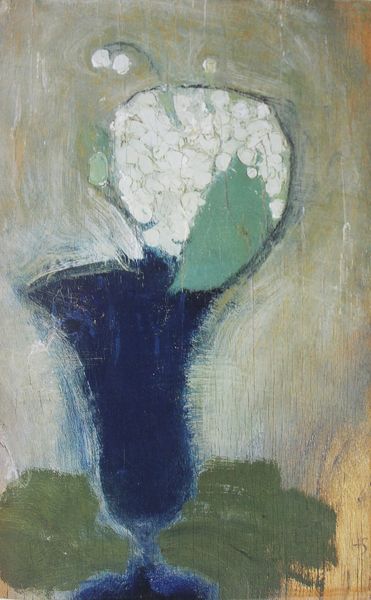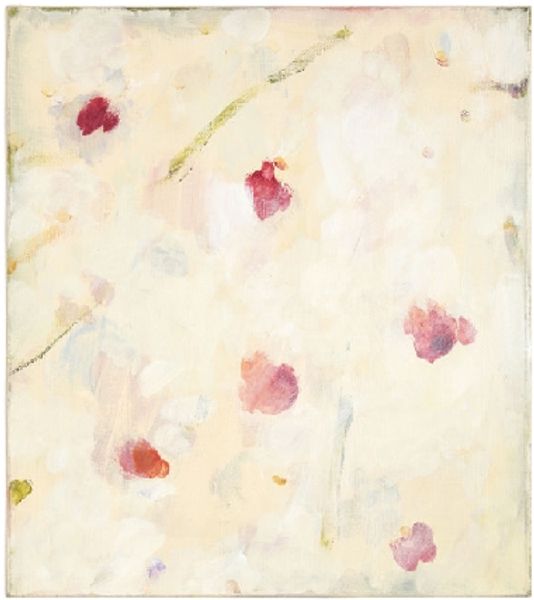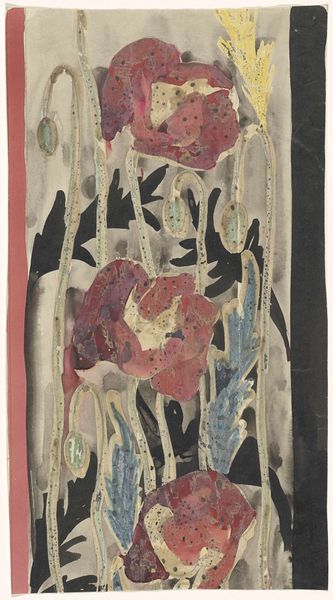
painting, oil-paint, impasto
#
painting
#
oil-paint
#
figuration
#
impasto
#
modernism
Copyright: Public domain China
Here we see “Tulip”, painted by Sanyu, sometime during his career, featuring tulips in a vase, rendered with delicate lines and a muted palette. The tulip, originating in Persia and making its way to Europe, became a symbol of wealth and status during the Dutch Golden Age. Notice how the closed buds, rendered in pale hues, convey a sense of dormant potential. This evokes associations with purity and new beginnings. We can trace these floral motifs back to ancient Minoan frescoes, where stylized flowers symbolized nature’s life-giving force. Similarly, in Renaissance paintings, flowers often represented transience and the ephemeral nature of beauty. Consider how the simple elegance of Sanyu's tulips speaks to a longing for harmony and peace. The motif of the flower, laden with cultural memory, becomes a poignant reminder of the cyclical nature of life. The symbolism has undergone constant rebirth, each time coloured by the unique hues of its era, and speaks to something deep within us.
Comments
No comments
Be the first to comment and join the conversation on the ultimate creative platform.
